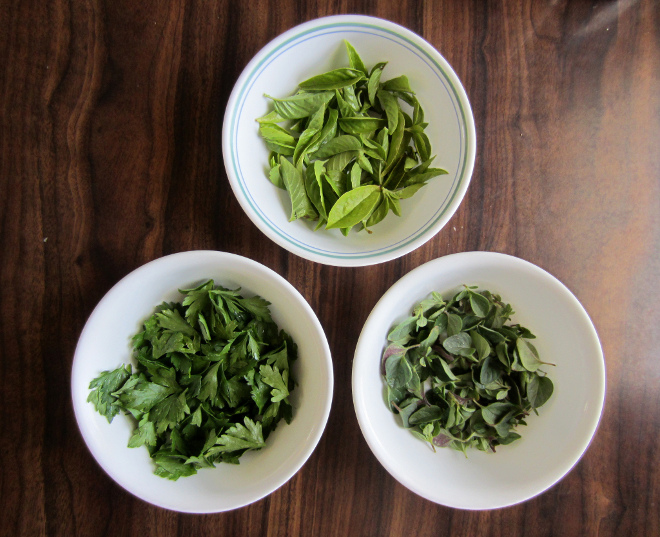Opportunity Snapshot
- Country:
 India
India - Industry: Agriculture
- Stage: Start-up
- Investment size: $150,000 / min. $100,000
- ROI: 100% in 3 years
- Type of investment: Debt, Equity
 Our aim is to develop highly-profitable farms by using soil-less agriculture technology (Hydroponics) to grow and sell premium-quality processed culinary herbs. Image courtesy of Michelle Dyer, 2012, Flickr CC.
Our aim is to develop highly-profitable farms by using soil-less agriculture technology (Hydroponics) to grow and sell premium-quality processed culinary herbs. Image courtesy of Michelle Dyer, 2012, Flickr CC.
Investment Opportunity
Our aim is to develop highly-profitable farms by using soil-less agriculture technology (Hydroponics) to grow and sell premium-quality processed culinary herbs.
1) Introduction
We are a Bangalore based Agri company aiming to develop highly-profitable farms by using soil-less agriculture technology (Hydroponics) to grow and sell premium-quality, processed culinary herbs and spices to the food industry.
2) Products
Based on the demand, we may sell produce as fresh culinary herbs, dehydrated leaves /chillies or flakes. The production will start with:
- Basil (dehydrated): 1/3 acre, on coco peat, produces 15 tonnes per year
- Oregano (dehydrated): 1/3 acre, on coco peat, produces 15 tonnes per year
- Thyme (dehydrated): 1/3 acre, on coco peat, produces 15 tonnes per year
- Dry Chillies (dehydrated): 1 acre, on coco peat, produces 10 tonnes per year
3) Technology
Hydroponics (or soil-less agriculture) is a method of growing plants using mineral nutrient solutions in water. The required nutrients are introduced into a plant's water supply artificially which is absorbed directly by the roots, thus helping the plant grow faster and yield more. Terrestrial plants may be grown with their roots in the mineral nutrient solution only or in an inert medium, such as gravel, mineral wool, expanded clay pebbles or coconut husk. In natural conditions, soil acts as a mineral nutrient reservoir but the soil itself is not essential for plant growth, hydroponics technique uses state-of-the-art multi-span greenhouse facilities which are temperature-controlled. The advantages of using hydroponics are:
• 80% reduction in consumption of water compared to open-field farming
• 80% reduction of harvest labour
• 15% reduction in harvest time
4) Opportunity
In the food industry, which we have identified as our primary customers, each restaurant has a demand of approximately 10-20 kilos of processed herbs per month, and an average of 1000-1500 restaurants in each major city with demand for culinary herbs, the total market demand for culinary herbs is approximately 1000 tons per herb per year. This equates to a market opportunity of INR 200 Crores, growing 7% annually.
5) Revenue generation
We will have a total capacity of selling up to 5 tonnes of Culinary herbs and 3 tonnes of chilli flakes / powder every month. At an average price of $3 per kilo, initially we'd start with 3 tonnes per month of each product, as that is the current order size we have.
Competitive Advantage
Our company's main competitive advantages are:
- No Established company in culinary herbs in India, most of it is imported
- Team brings in over 25 years of experience in greenhouse agriculture and hydroponics
- Market tie-ups with Local and international buyers with MoU's signed
- Consistent quality products with hydroponics technique throughout the year.
- End to end production of the product, growing to processing and packaging.
- Over 80 acres of land bank available for quick scale up
Use of financing
Financial considerations:
The venture seeks to raise a mix of debt and equity investment broken down into 2 / 3 tranches, the funding will be for setting up the greenhouse, installing the hydroponics system, purchasing farm equipment, installing a processing facility and the development costs of the project as a one-time investment.
The Government of India will be giving us a cash-back subsidy of 50% of total installation cost within a year of operations
Our investment requirement will also cover a year of working capital. We estimate that the venture will become profitable within 2 years of becoming operational. Production can begin 45 days after the first greenhouse tunnel has been erected.
Looking for similar investment opportunities